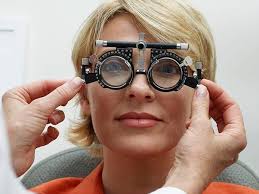
How to Improve Our Vision
I recently finished reading a novel called, “Have You Seen Luis Velez” by one of my favorite authors, Catherine Ryan Hyde.
It’s an unusual title, I know, but no more so than the plot, which is about a 17-year-old boy named Raymond who befriends a 92-year-old woman who lives in his apartment building in New York City.
The woman, Mildred Gutermann, a blind, German Jew whose family narrowly escaped the Holocaust, has been alone since Luis Velez, a modern-day Good Samaritan who visited her and helped her regularly, suddenly stopped coming. She spots Raymond in the hallway one day and asks, “Have you seen Luis Velez?”
The subsequent conversation between the two blossoms into a deep friendship in which Raymond, who is black, substitutes for Velez, spending time with Mildred, doing errands and the task he takes on with dogged determination – finding Luis Velez.
Knocks on Doors
Finding 21 Luis Velezes in the New York phone directory, Raymond sets out to knock on doors. His quest introduces him to several Luis Velezes — some friendly and others not so much.
It turns out that Mildred’s Luis Velez was fatally shot on the street by a woman who felt threatened when Velez approached her after picking up the billfold she had dropped. The woman, who is white, is charged with manslaughter but acquitted at her trial. After hearing evidence that the woman had racist tendencies, Mildred, Raymond and Velez’s family are shocked that the jury made her pay no price for her reckless shooting.
“The jury did not even see,” says Mildred. “They did not even see, Raymond. What can you do with a world where people do not even see?”
The novel is a parable, I believe, examining through a heart-tugging story how our racial, social and economic backgrounds shape our view of the world and the difficulty of seeing things as they are.
Blindness as Metaphor
People familiar with the New Testament may immediately think of the times blindness is used as a metaphor for our inability to see reality in the context of our faith. One of them is evident in the story of Jesus curing a blind man in Chapter 9 of the Gospel of John. It’s a curious story that leads to a confrontation between the blind man’s parents and the Jewish religious authorities.
But the principal lesson is about blindness, not the kind people who have lost their physical vision have, but the kind we have when we fail to see God in ourselves, in others and in the world. At the end of the story Jesus says he “came into this world that those who do not see may see, and that those who see may become blind.”
Some Pharisees, a strict Jewish sect with whom Jesus often clashed, heard this and asked Jesus, “Are we also blind?” He answered, “If you were blind, you would have no guilt; but now that you say, ‘We see,’ your guilt remains.”
Helping Workers
For me, this also brings to mind “Observe, Judge, Act,” the formula developed in the 1920s by Belgian Cardinal Joseph Cardijn, who as a young priest began helping workers who were suffering from conditions resulting from industrial development. He founded a group that eventually became the Young Christian Workers, which spawned similar organizations, including the Young Christian Students and the Christian Family Movement.
An online description says that through the method of “Observe, Judge, Act” CFM families “became involved in helping others in such ministries as foster-parenting, prison ministry, refugee sponsorship, care for the earth, feeding the hungry, religious education, and couples’ counseling. …They observed injustice and social stresses that impacted families, and they took action to make a difference in society as well as at home.”
Ryan Hyde’s’ Mildred was talking about this “observe” part, the first step in improving our vision. In my opinion, it’s also what Jesus was talking about.



